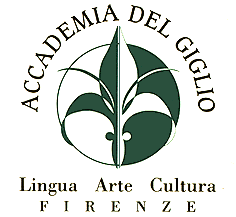 Si avvicina Pasqua e, come tutti gli anni, si pone il “problema” della gita fuori porta tipica del lunedì di Pasqua. Gli Italiani di solito amano andare a passare la “Pasquetta” in qualche città d’arte o preferibilmente in campagna, visto che in questo periodo si sta bene fuori e la campagna appare bella e profumata dopo la lunga pausa invernale.
Si avvicina Pasqua e, come tutti gli anni, si pone il “problema” della gita fuori porta tipica del lunedì di Pasqua. Gli Italiani di solito amano andare a passare la “Pasquetta” in qualche città d’arte o preferibilmente in campagna, visto che in questo periodo si sta bene fuori e la campagna appare bella e profumata dopo la lunga pausa invernale.
Perché dunque non scegliere una meta che permetta di unire l’arte a una piacevole giornata nel verde delle colline toscane? Dal 31 marzo è infatti possibile visitare l’itinerario proposto dalla mostra su Piero della Francesca, nei luoghi di origine di questo grandissimo pittore del Quattrocento. Il percorso proposto dalla mostra si snoda tra la Cappella Bacci della chiesa di San Francesco ad Arezzo, dove sono conservati gli splendidi affreschi della “Leggenda della Vera Croce”, il Duomo di Arezzo, il Museo Madonna del Parto di Monterchi e il Museo Civico di Sansepolcro.
L’opera di Piero della Francesca (1416 ca-1492) si distingue per il grande rigore prospettico appreso dalle opere brunelleschiane e albertiane, i colori delicati tipici della maniera di Beato Angelico, il plasticismo scultoreo appreso da Masaccio durante il suo soggiorno fiorentino da collocarsi intorno al 1439. Piero fu attivo non solo nei suoi luoghi di origine ma anche nella corte di Ferrara e Urbino, a Roma, A Rimini dove conobbe Leon Battista Alberti e ne studiò le opere.
Le sue figure occupano concretamente lo spazio ma sembrano lontane dalla scena che vivono, non sono scosse da sentimenti né tradiscono emozioni: questo distacco non priva tuttavia le opere di Piero di forza comunicativa ma casomai le arricchisce. Gli sguardi apparentemente vacui dei suoi personaggi fissano talora un punto indeterminato, talora lo spettatore stesso trasmettendo un messaggio immediato, spietato e violento che presenta la realtà esattamente per quello che è. Le sue opere risultano esatte nei particolari come i capolavori di Roger Van der Weiden, tanto ammirato da Piero, ma private dell’accorato movimento del maestro fiammingo, propongono scene che per il loro stesso freddo distacco suscitano emozioni altrettanto forti.
A far da cornice alla mostra ci sono l’ondulato paesaggio della campagna toscana e il gusto dei suoi sapori che servono da incentivo per invogliare a trascorrere una giornata con Piero e i suoi luoghi.







One approaches Easter and, as in other years, one assumes the “problem” of a journey out of the city on Easter Monday. The Italians usually love to go to and spend Easter Monday in any art city, or preferably in the country, seeing that in this time period, it is better to be outside, and thus, the countryside appears beautiful and perfumed after the long winter interval.
Why then can’t one choose a destination that allows the unity of art on a peaceful day in the green Tuscan hills? On the 31st of March, it is in fact possible to pay a visit to the proposed itinerary of the Piero della Francesca exhibition, which is located in this grand 4th century artist’s birth place. The proposed route of the exhibition winds from the Cappella Bacci to the Church of Saint Francesco of Arezzo, where the splendid frescoes of the “Legend of Vera Croce,” the Duomo of Arezzo, the Madonna of the Monterchi Area Museum, and the civic Museum of Sansepolcro have been conserved.
The works of Piero della Francesca (1460-1492) distinguish themselves from the precise perspective rules learned from the Brunelleschian and Albertian works, the delicate colors used typical of the Beato Angelican manner, and the plasticized sculpture learned from Masaccio during his Florentine days which place themselves around 1439. Piero was not only active in his place of origin, but also in the court of Ferrara and Urbino, in Rome, and Rimini where he knew Leon Battista Alberti in his place of work.
His figures concretely occupy the space but seem further away than the living scene, and are not shaken by sentiment nor emotional traditions: this detachment doesn’t mean that Piero’s work is of a forceful communication. The apparently vacant gazes of the characters fix, at times, upon an indeterminable point, and at times the same watcher sends an immediate message, ruthless and violent, that presents the exact reality for that which is. His works result exactly in particularities like the masterpieces of Roger Van der Weiden, much admired by Piero, but deprived of concerned care of the Flemish master, they propose scenes that, for their same cold distance, sustained such emotional strength.
To frame the exhibition, the undulating ways of the Tuscan countryside and the taste of Tuscany benefit the desire to spend one day with Piero and his sites.